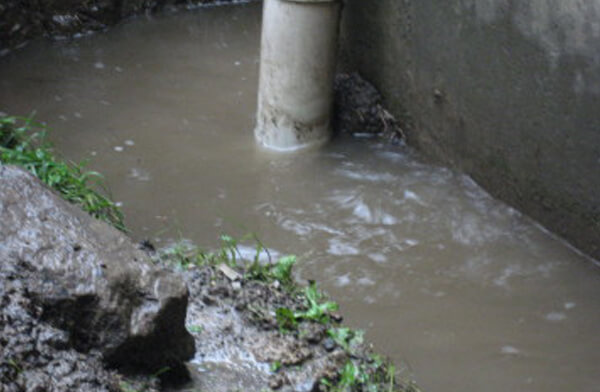Guide To Water Leakage Discovery At Home
Guide To Water Leakage Discovery At Home
Blog Article
Listed here down the page you'll find a lot of wonderful points about Locating water leaks.

Early discovery of dripping water lines can alleviate a possible catastrophe. In addition to saving you money, it will reduce the irritation as well as disappointment. The minute you discover a leak, calling your plumber for fixings is the most effective solution. Some small water leaks may not be noticeable. Here are some hacks that aid if you can not find it with your naked eyes.
1. Check Out the Water Meter
Every home has a water meter. Checking it is a guaranteed way that assists you discover leakages. For beginners, shut off all the water resources. Guarantee no person will purge, make use of the faucet, shower, run the cleaning equipment or dishwashing machine. From there, most likely to the meter and watch if it will alter. Given that no one is using it, there must be no activities. If it moves, that suggests a fast-moving leakage. If you identify no changes, wait an hour or 2 and check back once again. This indicates you may have a sluggish leak that might also be underground.
2. Inspect Water Consumption
Examine your water expenses as well as track your water usage. As the one paying it, you need to see if there are any kind of disparities. If you detect sudden changes, regardless of your consumption coinciding, it suggests that you have leaks in your plumbing system. Keep in mind, your water bill should fall under the exact same array every month. An abrupt spike in your costs shows a fast-moving leak.
At the same time, a constant rise every month, despite having the same routines, shows you have a sluggish leakage that's also slowly rising. Call a plumber to extensively check your building, especially if you feel a warm area on your floor with piping beneath.
3. Do a Food Coloring Test
When it involves water intake, 30% originates from commodes. Examination to see if they are running appropriately. Decrease specks of food color in the tank and wait 10 minutes. There's a leakage between the storage tank as well as bowl if the shade in some way infiltrates your bowl throughout that time without flushing.
4. Asses Exterior Lines
Do not forget to check your exterior water lines also. Examination faucets by attaching a garden hose pipe. Should water leak out of the link, you have a loosened rubber gasket. Replace this and guarantee all links are tight. It will certainly help obtain it skillfully took a look at and also maintained each year if you've got a sprinkler system. One small leakage can lose lots of water and also increase your water costs.
5. Inspect and also Examine the Situation
Homeowners must make it a practice to examine under the sink counters as well as also inside cupboards for any bad odor or mold and mildew development. These two warnings indicate a leakage so prompt interest is called for. Doing routine examinations, even bi-annually, can conserve you from a significant problem.
Inspect for stainings and also weakening as the majority of pipes as well as appliances have a life expectancy. If you presume dripping water lines in your plumbing system, don't wait for it to intensify.
Early discovery of leaking water lines can reduce a possible disaster. Some tiny water leaks might not be noticeable. Examining it is a surefire way that assists you find leakages. One little leakage can throw away loads of water as well as surge your water expense.
If you presume leaking water lines in your plumbing system, don't wait for it to intensify.
WARNING SIGNS OF WATER LEAKAGE BEHIND THE WALL
PERSISTENT MUSTY ODORS
As water slowly drips from a leaky pipe inside the wall, flooring and sheetrock stay damp and develop an odor similar to wet cardboard. It generates a musty smell that can help you find hidden leaks.
MOLD IN UNUSUAL AREAS
Mold usually grows in wet areas like kitchens, baths and laundry rooms. If you spot the stuff on walls or baseboards in other rooms of the house, it’s a good indicator of undetected water leaks.
STAINS THAT GROW
When mold thrives around a leaky pipe, it sometimes takes hold on the inside surface of the affected wall. A growing stain on otherwise clean sheetrock is often your sign of a hidden plumbing problem.
PEELING OR BUBBLING WALLPAPER / PAINT
This clue is easy to miss in rooms that don’t get much use. When you see wallpaper separating along seams or paint bubbling or flaking off the wall, blame sheetrock that stays wet because of an undetected leak.
BUCKLED CEILINGS AND STAINED FLOORS
If ceilings or floors in bathrooms, kitchens or laundry areas develop structural problems, don’t rule out constant damp inside the walls. Wet sheetrock can affect adjacent framing, flooring and ceilings.
https://www.servicemasterbyzaba.com/blog/how-to-detect-water-leakage-in-walls/

I was shown that report about Locating water leaks through a good friend on another site. Enjoyed reading our content? Please share it. Help someone else locate it. I value reading our article about Top leak detection hacks.
Report this page